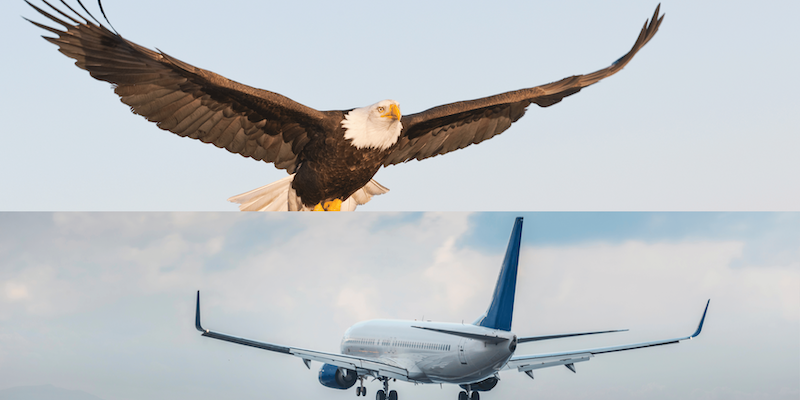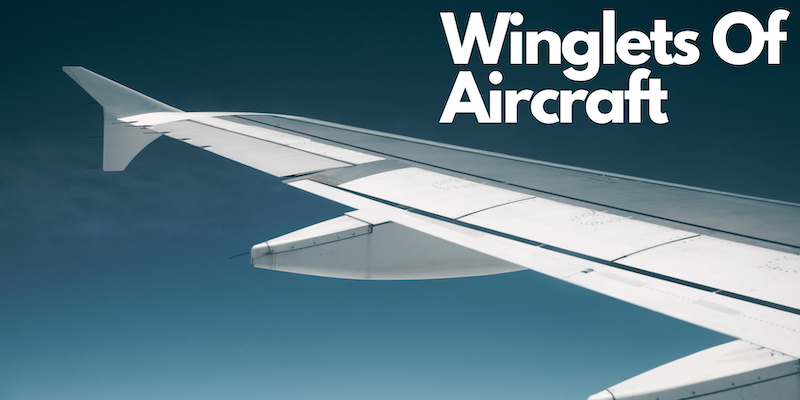Have you ever noticed the curved wingtips on airplanes and wondered why they’re shaped that way? This feature, seen in many modern aircraft, isn’t just for aesthetics. It’s a clever design strategy with a vital purpose – enhancing the performance and efficiency of the aircraft.
A winglet or wingtip device is a specific design feature found at the tip of an airplane wing. It often curves or angles upward, looking almost like a small fin. The primary function of this seemingly minor yet crucial component is to minimize the aircraft’s drag, essentially the air resistance encountered during flight.
The design of this curvature, interestingly enough, isn’t universal across all types of aircraft. It varies significantly from one manufacturer to another and even among different models from the same manufacturer. The degree of the curve, the angle, and the overall design are carefully calculated based on a multitude of factors.
If you are on a flight next time and you notice the curvature at the end of the wings you will know the reason now as to why the ends of the aerodynamic wing look odd. Let us understand more about this design. Before understanding the science behind the wingtips let us understand the need for one.
What is the need for the wingtips to be curved on the aircraft wing?
The aspect ratio of an aircraft wing – essentially, the ratio of the wing’s length squared to its area – plays a critical role in producing the lift needed for the aircraft to ascend. In aerodynamic terms, a higher aspect ratio typically translates to a lower drag, thereby increasing the wing’s lift efficiency. Let us understand why.
The shape of the wing creates high pressure on the bottom of the wing and low pressure on the top of the wing which causes the lift required for the aircraft to move away from the ground. The high-pressure air from beneath the wing tends to flow towards the lower pressure region on top, producing a swirling motion at the wingtips and forming wingtip vortices.
Now, a wing with a low aspect ratio has a broader chord (the width of the wing) which means there’s a shorter distance for this high-pressure air to travel to the top. This results in larger, stronger vortices and hence greater induced drag.
On the other hand, a high aspect ratio wing, being longer and narrower, allows less cross-flow of air from bottom to top, producing smaller vortices and thereby reducing the induced drag.
While a long, narrow wing with a high aspect ratio offers aerodynamic benefits such as improved lift-to-drag ratio, it’s important to note that as an aircraft becomes bigger it becomes harder to have long wings with a high aspect ratio. There are several factors contributing to this design variation.
- Structural: High aspect-ratio wings are longer and narrower, which can lead to structural issues. Longer wings are more prone to bending and may require additional structural reinforcements, adding to the aircraft’s weight.
- Maneuverability: Aircraft with high aspect-ratio wings can face difficulties in maneuvering, especially during take-offs and landings. Shorter wings provide better balance and maneuverability, which is crucial for large aircraft and when operating under challenging weather conditions.
- Parasitic Drag: While high aspect-ratio wings can reduce induced drag, they may actually increase parasitic drag. This is the drag associated with the actual structure of the aircraft, such as the friction between the air and the wing surface.
- Practicality: Low aspect ratios offer a larger internal volume, thanks to their increased maximum thickness. This additional space can be effectively utilized to accommodate fuel tanks, retractable landing gear, and other essential systems.
- Airfield Size: The airfield’s size is another limiting factor for high aspect-ratio wings. Longer wings require wider runways and larger hangar spaces. This requirement for additional space can limit an aircraft’s accessibility to certain airports.
That’s where the clever design of wingtips comes into play. By curving the wingtips, or adding wingtip devices or winglets, the effective aspect ratio of the wing can be increased which increases the lift on even shorter wings.
How do winglets work?
Winglets work by reducing the intensity of wingtip vortices, swirling air masses that generate drag. These vortices are created by high-pressure air from beneath the wing rushing upwards to meet low-pressure air on the top. Winglets, by curving upwards or downwards, create an efficient airfoil profile that minimizes this air pressure disparity, thereby reducing the strength of these vortices.
Consequently, less energy is wasted in creating drag, and more lift is generated per unit of span, effectively increasing the aspect ratio without the need to widen the wings. This clever aerodynamic trick comes with the added benefit of saving fuel, enhancing aircraft performance, and making air travel more eco-friendly.
Inspiration of winglets of aircraft wings from the nature:
The inspiration for the design of aircraft winglets is derived from observing nature, particularly from the flight patterns of birds. Birds often extend their primary feathers at the tips of their wings at a distinct upward angle while in flight.

This natural adaptation reduces the vortex and consequent drag at the wingtips, making flight more efficient. Engineers took a cue from this avian phenomenon to create winglet technology for aircraft.
By curving the wingtips upward or adding winglets, the spiraling air off the wingtip is reduced, thereby increasing fuel efficiency and overall flight performance. It’s a classic example of biomimicry, where human engineering solutions imitate natural designs.
Although most of the winglets have had heavy biomimicry from nature’s birds, Airbus was inspired by the sharks and their movements underwater. Airbus, in 2013, introduced “sharklets” as a retrofit to its A320 Family aircraft. These vertical wing-tip extensions, resembling a shark’s dorsal fin, were designed to enhance aerodynamics.
By reducing the size of the wingtip vortex, sharklets effectively minimize induced drag. Today, sharklets have become a standard feature on all members of the A320neo Family. Learn more about the A320neo Family.
Some other frequently asked questions about winglets in the wings of aircraft:
Do winglets make a plane faster?
While it’s not accurate to say that winglets make a plane faster, they do make flights more efficient. Winglets reduce the drag caused by wingtip vortices, which allows the plane to fly with less resistance. This reduction in drag means the aircraft can achieve the same speed while using less fuel.
So, while winglets don’t increase a plane’s top speed, they allow it to reach its cruising speed more efficiently, resulting in a smoother, quieter, and more fuel-efficient flight.
How much range do winglets add?
Winglets can significantly extend an aircraft’s range. The reduction of drag they provide translates into improved fuel efficiency, which in turn allows for longer flights on the same amount of fuel. It’s estimated that winglets can increase an aircraft’s range by up to 6 percent.
The exact increase can vary depending on a range of factors such as the aircraft model, the flight conditions, and the specific design and size of the winglets. While this might seem like a small improvement, on long-haul flights, it can equate to hundreds of additional miles.
What is the difference between a wingtip and a winglet?
The terms wingtip and winglet refer to different components of an aircraft’s wing. The wingtip is the end or the extremity of the wing, the farthest point from the fuselage. It’s where the airflow over the top of the wing meets the airflow underneath creating a vortex that causes drag.
On the other hand, a winglet is a vertical or angled extension at the end of the wing. The winglet is designed to disrupt the vortex generated at the wingtip, effectively reducing the drag and improving the aircraft’s fuel efficiency. So, in essence, while the wingtip refers to a structural element of the wing, the winglet is an additional, aerodynamic component designed to enhance the aircraft’s performance.
What is the difference between a winglet and sharklet?
While winglets and sharklets both serve the same purpose – to increase aircraft efficiency by reducing drag – there is a difference in terms of their design and the aircraft types they are used on.
Winglets are more generic and can be found on a variety of aircraft models. They are vertical or slightly curved structures at the end of the wing.
Sharklets, on the other hand, are a specific type of winglet used exclusively on Airbus aircraft. The term ‘sharklet’ is a brand name coined by Airbus, and these structures have a distinctive, curved design that resembles a shark’s fin. Sharklets are larger than standard winglets, offering even greater fuel savings and range extensions.

